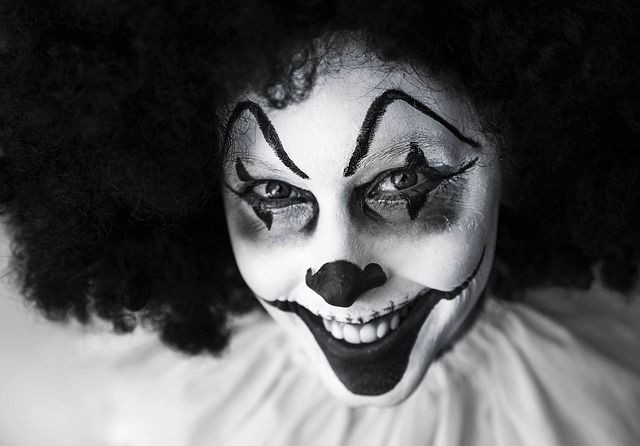I’m A Creep: Public Survey On Creepiness Places Bulgy Eyes, Thin Fingers, And Working As Clown High On List

Has someone ever made your skin crawl, but you couldn’t quite put your finger on why? A recent study from Knox University in Illinois may have the answer. The researchers put together the “first empirical study of creepiness,” and in it have outlined some traits that are overwhelmingly associated as“creepy.” This list is insightful to say the least, but you may be surprised at just how many of the creepy traits could be used to describe even you.
Francis McAndrew and Sara Koehnke interviewed 1,342 individuals (1,029 female and 312 males) of all ages using an online survey to gauge exactly what makes someone “creepy.” In the first half of the survey participants were asked to imagine that a close friend tells you they had just met a creepy person. The participants were then asked to rate the likelihood that the creepy person would exhibit 44 different patterns of behavior (such as never having looked your friend in the eye ) and physical characteristics (such as having a visible tattoo), on a scale of one (very unlikely) to five (very likely).
In the second part of the study, the participants were asked to rate the creepiness of 21 different occupations on a scale of one (not very creepy) and five (very creepy). The participants were also asked to simply list two hobbies that they thought were creepy. Finally, the participants were asked to express how much they agreed with 15 statements about creepy people, such as “I think that the person has a sexual interest in me” on a scale of one (strongly agree) to five (strongly disagree).
Results revealed both predictable and surprising revelations about what the general public consider to be creepy. For example, being a clown was found to be one of the creepiest occupations, followed closely by taxidermy and owning a sex shop. However, being a weatherman, writer, and security guard landed pretty high on the list as well. As for physical traits, having greasy unkempt hair, bulging eyes, and very pale skin were high up on the list of creepiness. In addition, behaviors associated with creepiness included asking for too many details about a person’s family and never looking someone in the eye.
Overall, the duo found that most perceptions of creepiness were consistent with being considered a threat. For example, being a male was also a popular “creepy” trait, and the team hypothesized that this may be because males are generally more physically threatening to both genders than are females. There also seemed to be a link between female’s perception of creepiness and feeling sexually threatened. The team also suspects that our ability to be creeped out is a defense mechanism that puts us on guard to individuals who may be dangerous or have malicious intentions, such as those who touch us too much or have a preoccupation with monitoring the behavior of others.
Don’t be alarmed if you find yourself falling into some of these creepy categories though. Most respondents found that in order to be classified as creepy you need to have multiple symptoms of creepiness rather than just one.
Source: McAndrews FT Koehnke SS. On The Nature of Creepiness. New Ideas in Psychology. 2016
Published by Medicaldaily.com



























